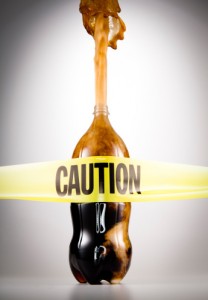This content has been archived. It may no longer be relevant
Since the holiday season is now in full gear, let’s take a moment for a brief thought-experiment…
Did you get together with your family for Thanksgiving this year? You probably did. It’s likely the only time of year you see certain family members, isn’t it? Now, imagine that over your turkey dinner, one of your relatives announces that what this family needs is a new portrait, with all of you together. The old one is so out of date, half of the kids are grown-ups with their own kids by now, and who knows the next time you’ll all be in the same place, right? So, at your local photography studio the next day, or maybe right after dinner in the living room, everyone assembles in a familial pose (not very comfortable, true, but only for a few minutes) and smiles for the camera.
Now, a question: when you do this, are you having your picture taken, or are you having your picture made?
There’s no substantive difference between the two, of course. In either case, it’s still a family portrait. But whichever you use conveys information about you, your background, your place of origin (if you have your picture made, the odds are excellent that you’re from the South, or have spent enough time there to pick up the lingo). This phenomenon is called regionalism, and on a larger scale is the principal reason why it’s so important to use native speakers in translation and interpretation.
Ever heard of a shibboleth? This is a word or phrase used to identify a person as belonging (or not belonging) to a particular group. Your word choice, syntax, even your pronunciation can speak volumes about you. Throughout history, shibboleths have been associated with great violence against whole groups of people – for an example of how one’s pronunciation of the Spanish word perejil once meant life or death, see the Parsley Massacre. Happily, these loaded words and sounds tend to inspire less violent reactions today, but they still tell the same stories, and if you’re translating for a given market, it’s a story that matters. You want your target audience to feel like they’re being approached by someone who is a part of their world, who understands them and what they want, and one way to destroy that hoped-for feeling of closeness is to use the wrong word for a simple, common thing.
Example: you’re distributing user guides for your product in France, and on the last page of the guide is an e-mail address for client questions and support requests. Perfectly easy and hazard-free, you might think… unless you translate e-mail as courriel. You see, courriel is the term for e-mail in French-speaking Canada. Use it in a European French document, and your guide will sound just as out-of-place in Paris as an American voice in New York would sound referring to a divided highway as a dual carriageway. It’s a lesson we can’t repeat enough in the translation business – stay native!
As mentioned above, these shibboleths need not be international. The different areas of English-speaking North America alone are home to many dialects, accents and terminologies. For instance:
– those delicious deli sandwiches you can buy at Subway, Quizno’s, Jersey Mike’s, and so on… is one of these a sub? a hero? a grinder? a wedge? or maybe a hoagie?
– and your favorite fizzy drink in a can… is it a soda? a pop? a soda-pop? a coke*? or even, perhaps, a tonic?
– do you get a quick drink of water from a water fountain or a bubbler?
– in your living room, do you stretch out to relax on a sofa? a couch? a divan? a davenport? a chesterfield?
– in the supermarket, do you push your groceries from aisle to aisle in a cart, or in a buggy?
– and now, an anecdote: your TrueLanguage blogger grew up on an island off the Eastern Shore of Maryland, and Shore people have a particular way of relating to the geography of the rest of the country. If you ever visit (and you should, it’s a beautiful place), you can tell the natives from the transplants by asking them about the parts of the state that lie on the other side of the Chesapeake Bay Bridge – transplants might name cities, towns, counties, but natives have a habit of referring to the land west of the bay, somewhat ominously, as across the bridge. Where I grew up, going across the bridge could have meant a 20-minute trip to Annapolis, an hour’s drive to Baltimore or Washington DC, a trek to Virginia, or a voyage even further afield… when you go across the bridge, there’s no telling where you’ll end up!
* if you’re from certain parts of the South, you’ll know that it doesn’t matter if your drink of choice is Coca-Cola, Pepsi-Cola, RC Cola, Cheerwine, root beer, or what have you – if it’s sweet, fizzy, and comes in a bottle or can, it’s a coke.


